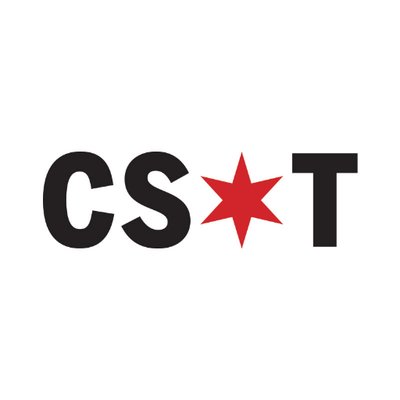



Chicago’s burgeoning migrant crisis will have cost taxpayers more than a quarter of a billino dollars by Dec. 31, Mayor Brandon Johnson told City Council members Friday.
The mayor also wanted Council members to know it is full-speed ahead for his plan to build giant, tent cities to move nearly asylum seekers out of Chicago police stations before the temperatures plummet. But he still offered no new details on that plan.
One day after the Chicago Sun-Times disclosed the parameters of Johnson’s bold plan, the mayor and his top aides held a series of virtual briefings to enlist the help of Chicago alderpersons in identifying vacant land where the “winterized base camps” could be built.
Included in the Johnson administration’s presentation were a series of graphics laying out the costs of a humanitarian crisis with no end in sight.
Between August and December of 2022, the city spent $17.5 million to house, feed, clothe and otherwise care for asylum seekers. As the pace of new arrivals increased exponentially, the city’s spending ballooned to $115.2 million from January through July 23 this year. Through the rest of the year, top mayoral aides expect the crisis to cost the city $123 million.
The grand total: $255.7 million.
Ald. Andre Vasquez (40th), chair of the City Council’s Committee of Immigrant and Refugee Rights, said he was alarmed, but not at all surprised by the skyrocketing price tag.
Vasquez said he has no idea where that $255.7 million is going to come from.
“Where it needs to come from is from state and federal funds. This is that kind of an issue. If you’re looking to other cities across the country that are also dealing with it, that’s the scale of the challenge,” Vasquez said.
“We need the state and the governor to convene other cities in Illinois to identify where else folks can take on some capacity. And then, we need the state and the federal government in regards to more funding and expedite work authorizations.”
Ald. Ray Lopez later issued a statement saying he is “cautiously optimistic” about Johnson’s proposal, but called it “simply unacceptable that Chicago is forced to shoulder the burden for asylum-seekers because of the federal government’s unwillingness to address this crisis decades in the making.”
During this week’s Sun-Times interview, Johnson repeatedly refused to rule out budget cuts or tax increases to deal with the burgeoning humanitarian crisis which has brought 13,500 migrants and counting to Chicago since last year.
He did say “sacrifices” would be required and the cost of not making those sacrifices would be far greater and would trigger “chaos.”
Vasquez, however, doesn’t believe there are other ways to get the money.
“I think it is really trying to identify what the other funding sources are, whether there’s [federal stimulus] funds that can be used, if there’s grant money, if there’s federal money or more offered by the state.”

Part of Mayor Johnson’s presentation to Chicago City Council members on Friday, during which he outlined the total cost to the city of dealing with the migrant crisis.
Provided
During Friday’s slide presentation, City Council members were shown pictures of what the giant tents would look like. They include frames, rows of cots, mess halls and attached heating and air-conditioning units. Trailer-like portable toilets were parked adjacent to the tents.
Alderpersons were not told where the tent cities would be located. They were simply asked to identify potential sites in their wards — preferably on concrete. Grass surfaces are OK, too, though.
Vasquez said he has heard of only one specific site: land at 115th and Halsted that once housed a Jewel grocery store.
“They’re already looking at different sites to identify what’s possible. Similar to the shelter sites, when they see candidates or opportunities in wards, they’ll be communicating to alders on the ground to let them know that it looks like this is a site they’re gonna be moving forward on,” Vasquez said.
Ald. Nick Sposato (38th) said during the virtual briefing he attended, top mayoral aides said there were five more buses on the way.
“This is just the tip of the iceberg. ... The floodgates are open,” Sposato said.
“They mentioned the state, the governor. But nobody ever said a damn word about the president, calling out the president. Let’s secure our borders.”
Sposato he was not surprised when the mayor and his lieutenants refused to say how many tent cities they planned to build.
“I really believe they don’t know. They can’t say they’re gonna build three of ’em when, really, we’re gonna need fifty of `em,” Sposato said.
“My bottom line is, I still don’t know what the hell is goin’ on. Other than they’re just saying, ‘Come on in. We’re gonna house you. We’re gonna feed you. We’re gonna clothe you. We’re gonna do everything for you. They’re digging in on the fact that we’re a sanctuary city. I think, at some point, we have to say, `We can’t do this anymore.’”
Sposato said he had a ton of questions going into the briefing and none were answered — though Johnson was joined by as many as eight top aides, including Interim Police Superintendent Fred Waller.
“I have no idea how we can pay for this because, in my opinion, this is just the tip of the iceberg. We haven’t seen anything yet. We’re gonna have to get this money from somewhere,” Sposato said. “I think it’s unsustainable and it’s gonna be impossible to pay for.”
